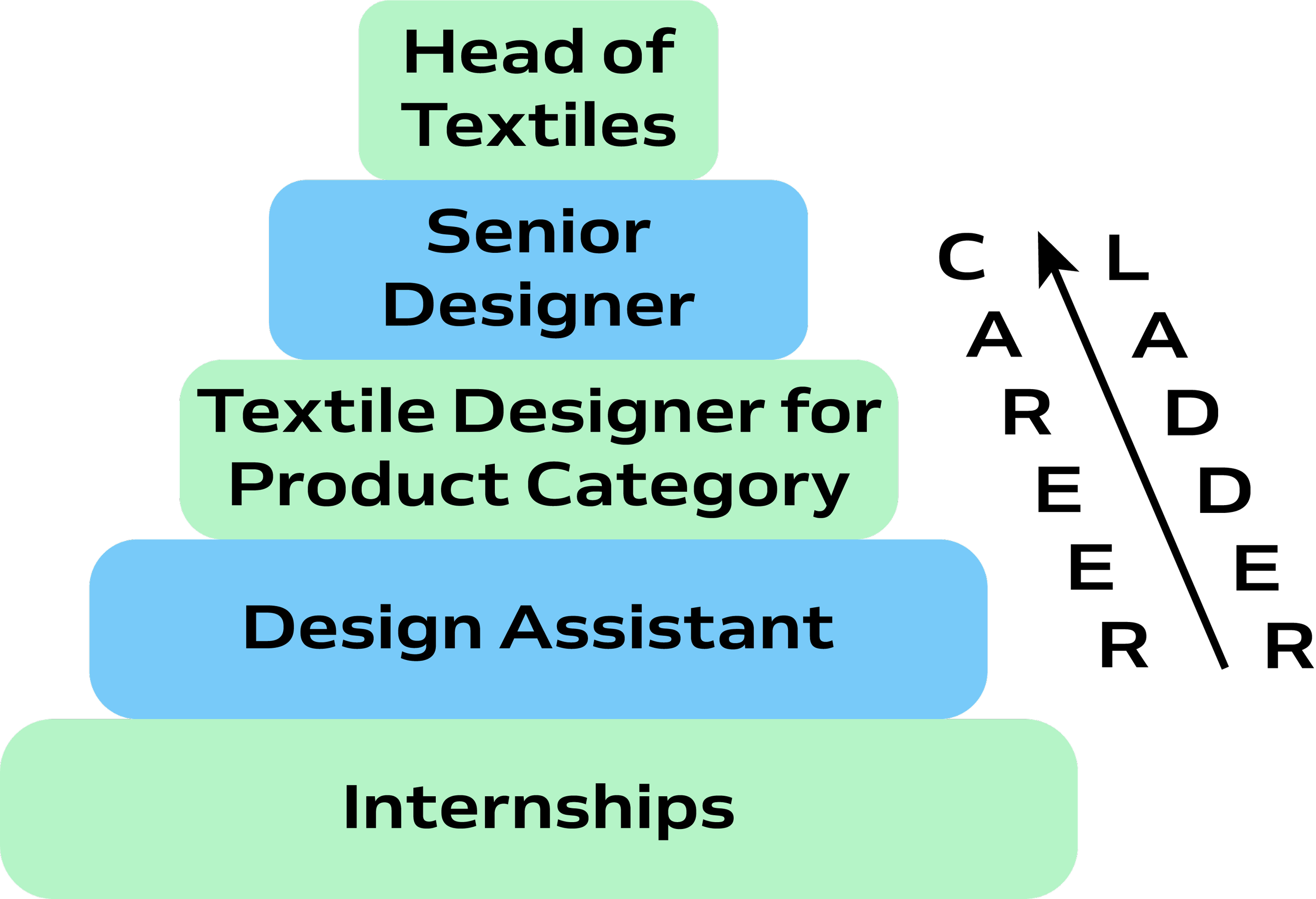
Unlike a fashion designer who creates whole garments, a textile designer is only focused on creating the fabrics and materials used to make clothing. Textile designers are super creative and get to experiment with different techniques to fulfil a brief that their client (a brand) has set for them. Textile designers have a broad knowledge of materials and their applications, as well as all the things you can do with those fabrics, from printing to embroidery, knitting, weaving and more.


Textile designers start their careers through internships with fashion brands or material manufacturers. Textile designers often specialise in a particular category, like knitwear, jersey or digital printing. Once they have found their niche, their career path might look like this:
Design assistant - Textile designer - Senior designer - Head of textiles

CAREER HIGHLIGHT
Textile designers spend their time working collaboratively within a business to communicate the design team’s creations in real life fabrics. They’ll experiment with different techniques, design prints, liaise with suppliers and manufacturers, and research new trends in textiles, such as colours, prints, or effects to share with their team.
If you’re self-employed, you might spend some time updating your portfolio to attract new clients and marketing your skills.
A degree in textile design is the perfect foundation to develop your skills and learn everything you need to become an amazing textile designer. This is a super creative role where you’ll need an eye for colour and form, as well as the ability to sketch and create with beautiful designs.
You’ll also need to work collaboratively, so a love of team work and strong communication skills will come in handy.
SKILLS NEEDED
Textile designers are inherently curious, so they’re always experimenting with new ideas, researching techniques, trying out new design software, and most importantly, enjoying the creative process.

The easiest way to get started as a textile designer is to start drawing. Flex your creative skills and come up with a pattern or design that you could imagine being used for fashion. Learn to knit, embroider and sew, trying your hand at as many different ways of making fabrics to understand how they work. You can also research the properties of different materials and what can be done with them. Why not try buying some clothing dyes and experiment with dying a white t-shirt at home?
text text
Fashion Futures Job Roles
In this section we will go over
Different job roles in the fashion industry
Career ladders, so you can work your way to the top from entry level roles
Daily Tasks and career highlights
What should you study?
What skills do you need?
